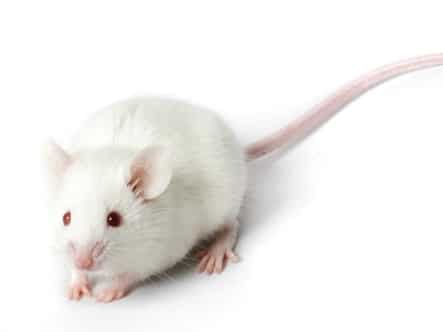
 Cancer and nanoparticles. A new approach to cancer treatment has been devised, one which uses nanoparticles to get chemotherapy drugs to target cancer cells directly, without harming healthy cells. So far, the technique has proven successful in mice, stopping the growth of prostate and breast cancers in mice and putting tumours into remission.
Cancer and nanoparticles. A new approach to cancer treatment has been devised, one which uses nanoparticles to get chemotherapy drugs to target cancer cells directly, without harming healthy cells. So far, the technique has proven successful in mice, stopping the growth of prostate and breast cancers in mice and putting tumours into remission.
Nanotechnology applications in medicine are beginning to bear fruit, especially in the field of targeted drug delivery. Nanoparticles are materials between one and 100 nanometres in size —100,000 of them together would be the thickness of a human hair— which because of their size can express different properties from their larger versions. Nanoparticles of gold, for example, can reflect light differently, appearing red in colour, while copper nanoparticles are much less malleable.
Cancer: nanoparticles can contain and transport compounds like chemotherapy drugs
Scientists have been able to create nanoparticles that can contain and transport other compounds like chemotherapy drugs so that when injected into the blood stream, the nanoparticles will end up attaching to targeted cancer cells and not healthy cells. This can help prevent the unwanted, sometimes deadly side effects of chemotherapy.
Now, in a new study from the Norwegian University of Science and Technology, researchers have shown one potential route around a problem associated with nanoparticle drug delivery. The issue stems from the fact that while targeted nanoparticles in the bloodstream can be fitted such that they are able to attach themselves to cancer cells and not healthy tissues, their ability to travel from the blood vessels deep into the cancerous tissue is limited.
To get around the problem, researchers embedded nanoparticles in tiny bubbles —microbubbles, in fact— which could then be injected into the bloodstream and, using ultrasound radiation aimed specifically at the tumour, researchers could vibrate and pop the microbubbles only once they had reached their destination. The ultrasound waves also performed the task of massaging and opening up of blood vessels and tissues to make them more porous, so that the nanoparticles could travel further into the tumour tissue.
The approach ends up being a far more effective and efficient method of drug delivery, says Sofie Snipstad of the Department of Physics at Norwegian University of Science and Technology in Trondheim, Norway.
“By using ultrasound to transport the chemotherapy-laden nanoparticles into the tumors, our research on mice has shown that we can deliver about 250 times more of the drug to the tumor compared to just injecting chemotherapy into the bloodstream alone,” says Snipstad, in a press release.
The ultrasound method was tested on mice who, one hundred days after treatment were still cancer-free. The new technique will need many more years before it’s ready for human testing, however.
“It can take from 10-20 years from the time a discovery is made in the lab until it can be used as a treatment,” Snipstad said. “We’ve been working on this about six years, so we still have a lot to learn.
The use of microbubbles to transport nanoparticles has been the focus of medical biophysics research at the University of Toronto, where in 2015, researchers showed for the first time that microbubbles could be used to safely transport nanoparticles which, after bursting the bubble, could be tracked using imaging technology.
Leave a Reply
You must be logged in to post a comment.




 Share
Share Tweet
Tweet Share
Share




Comment